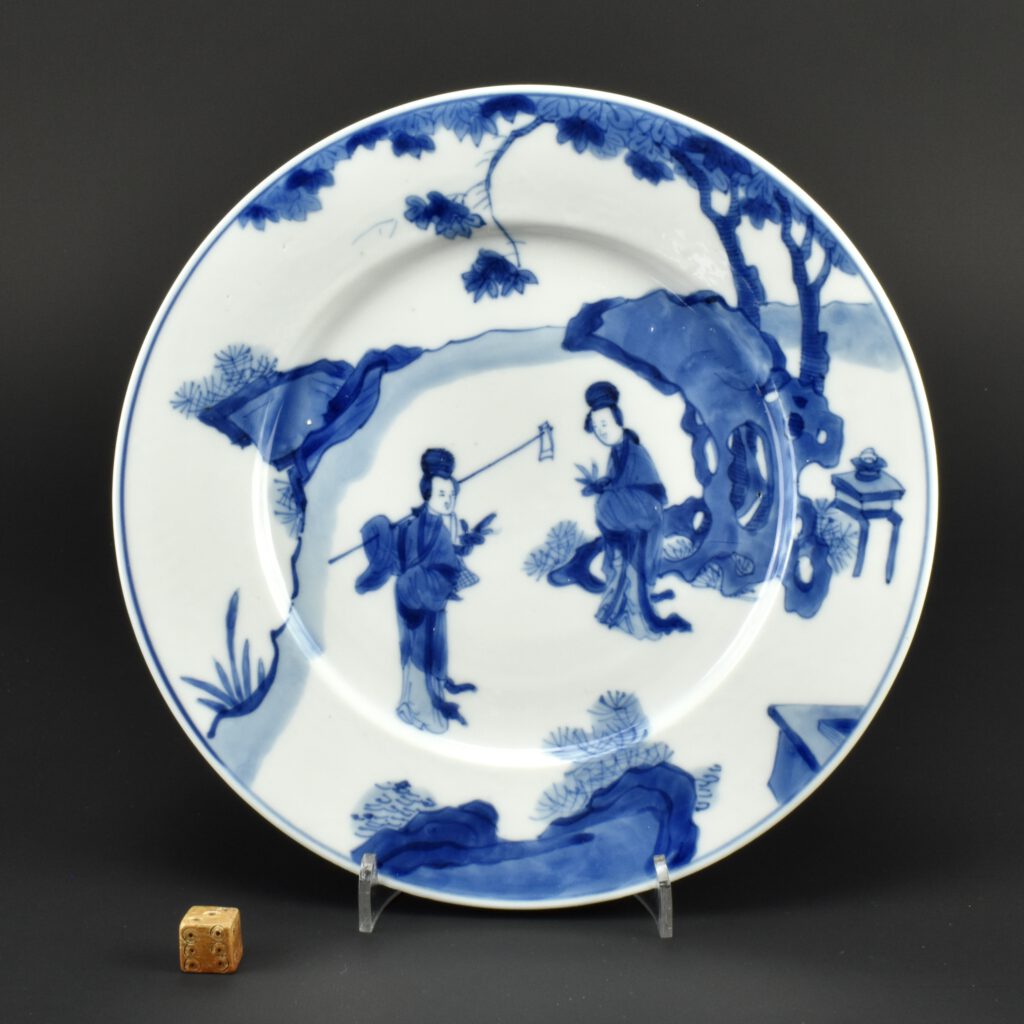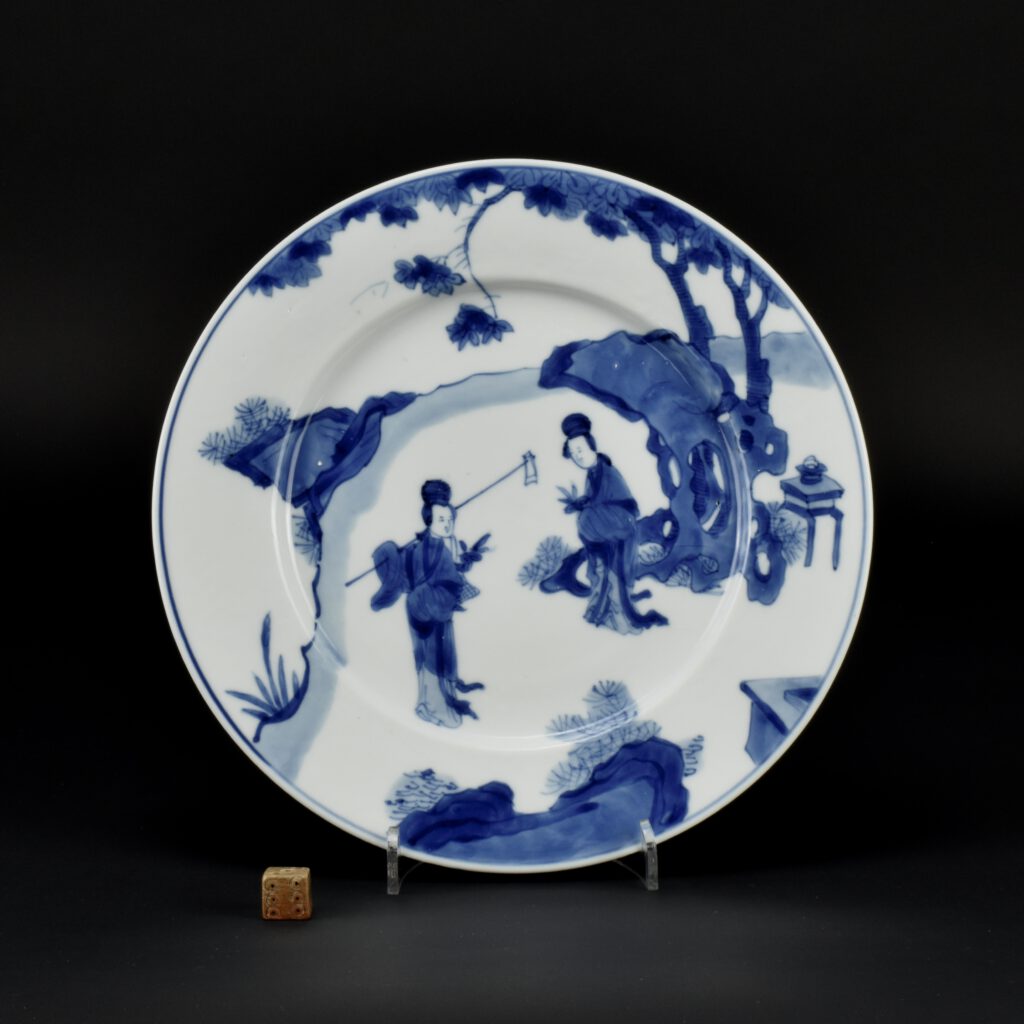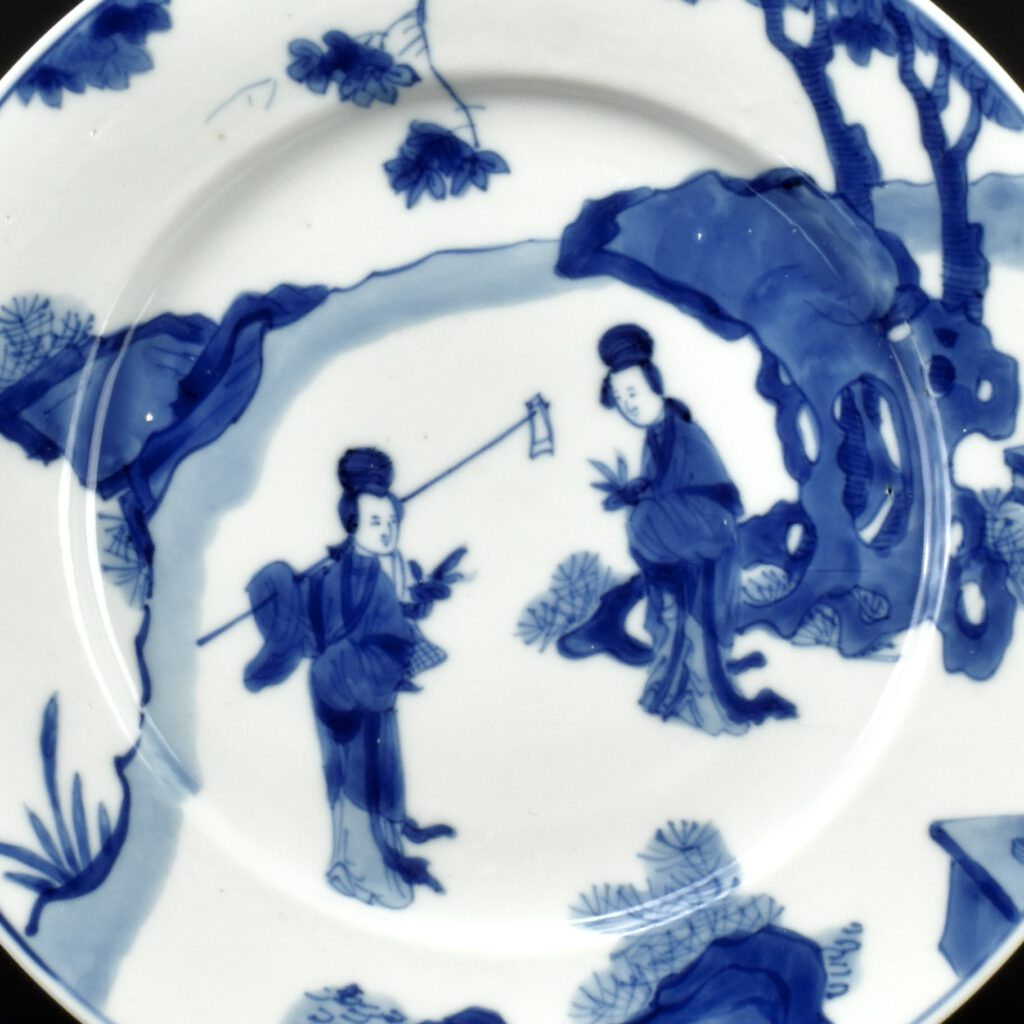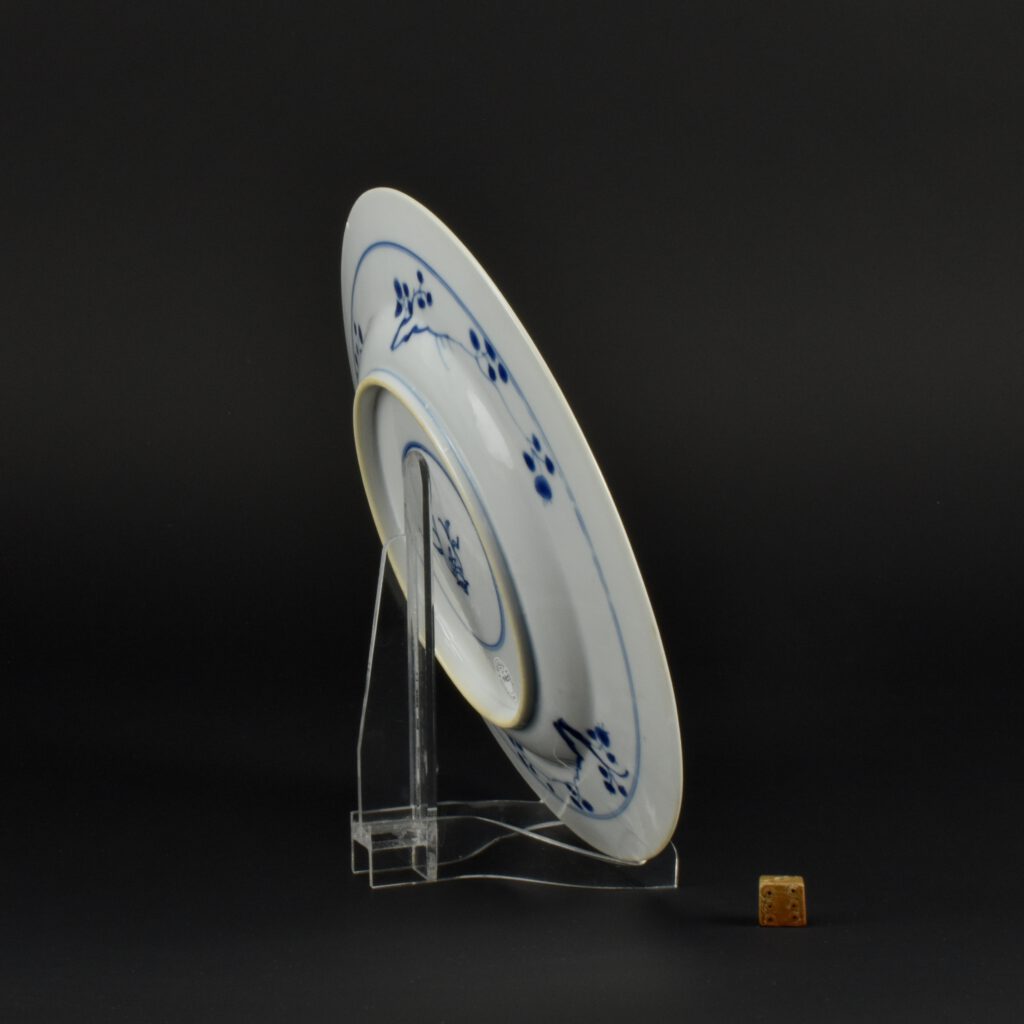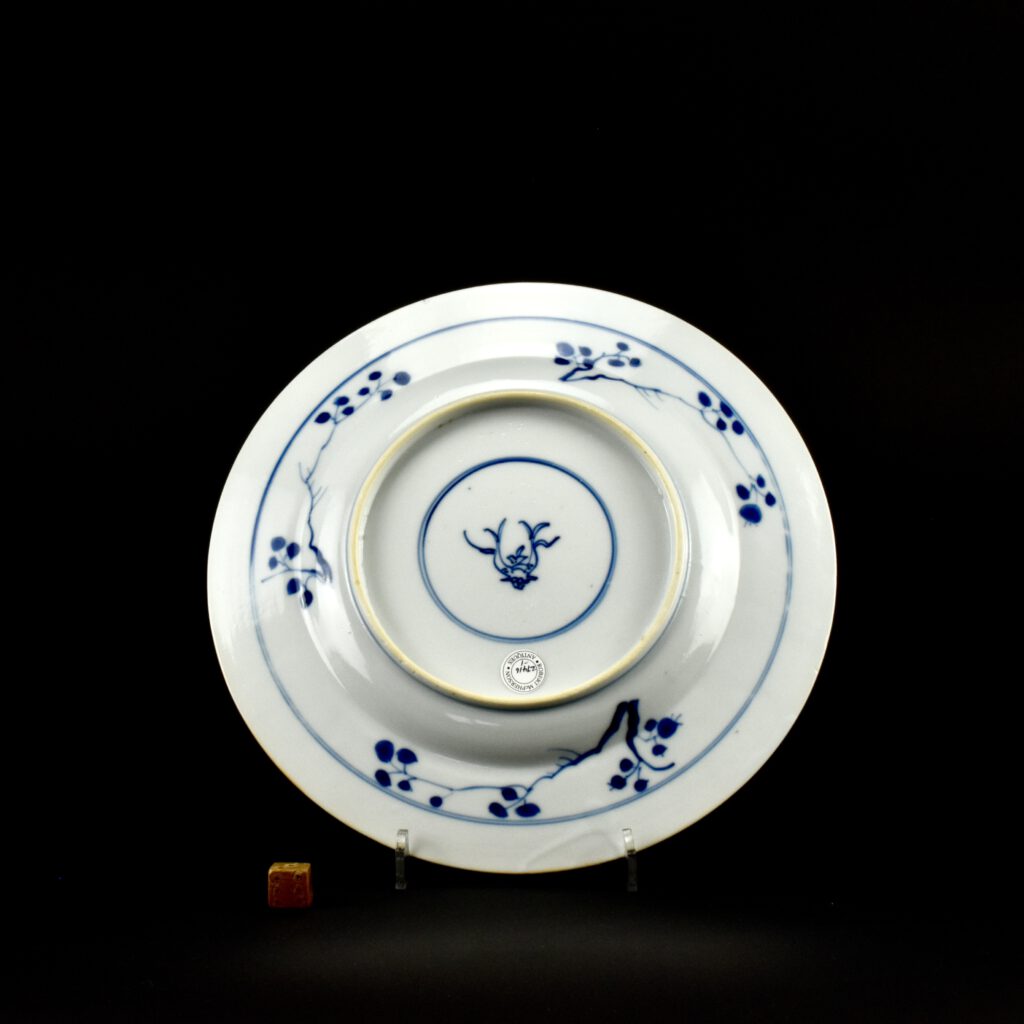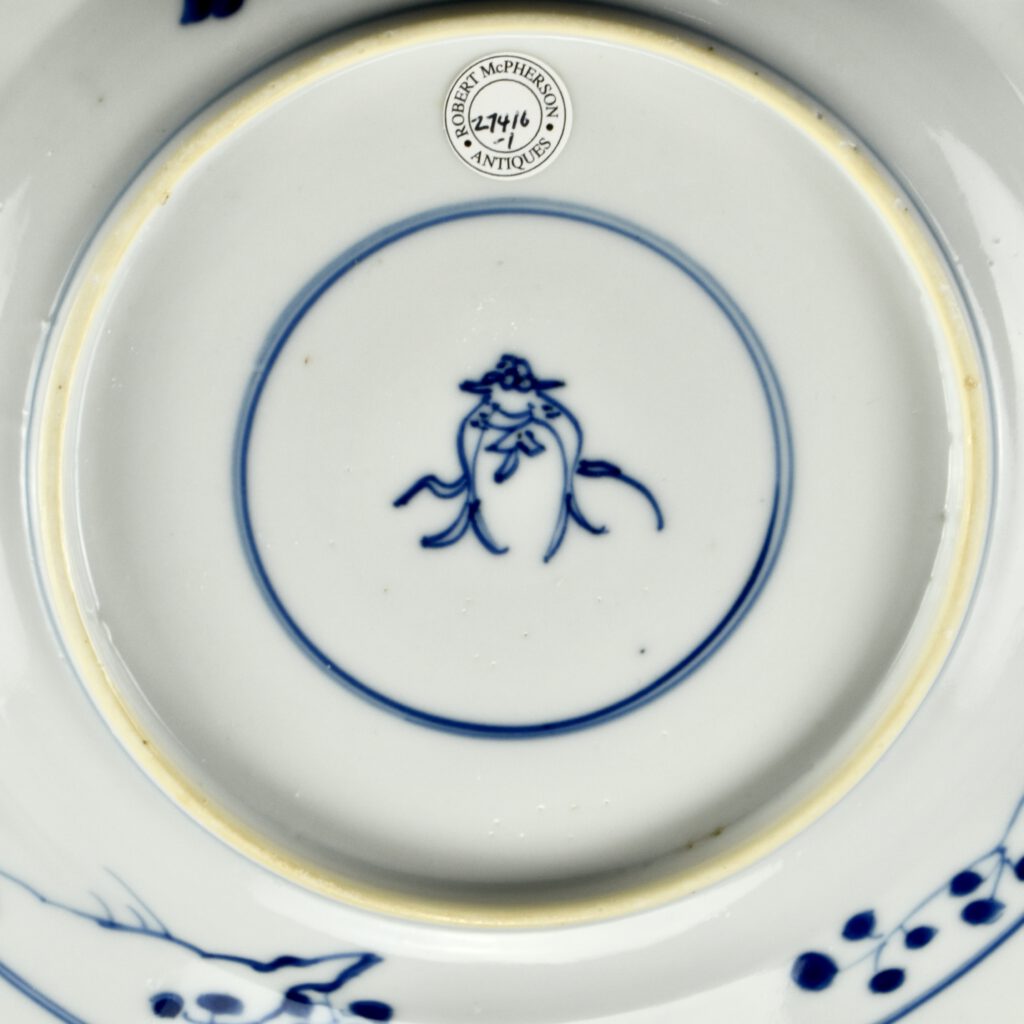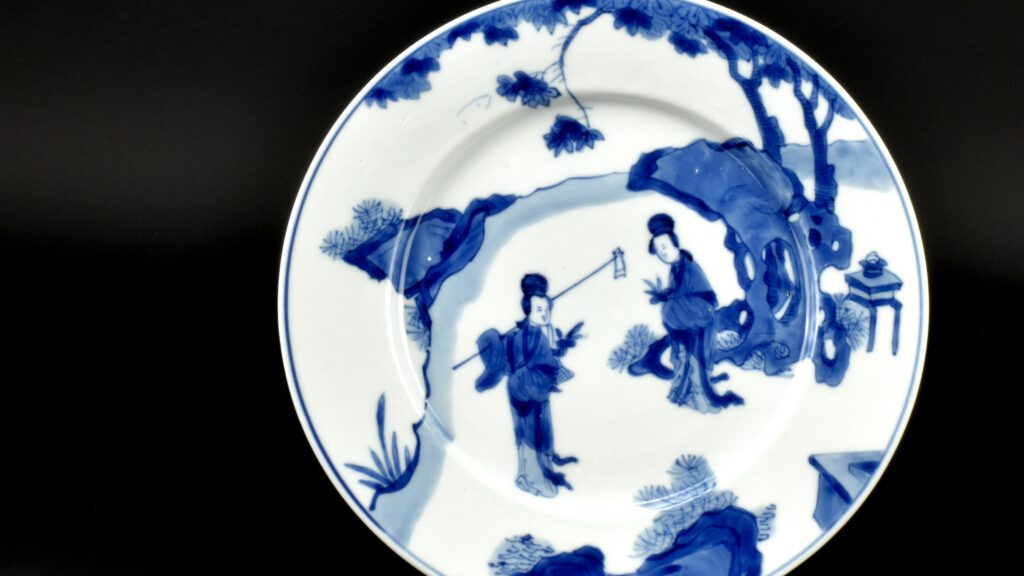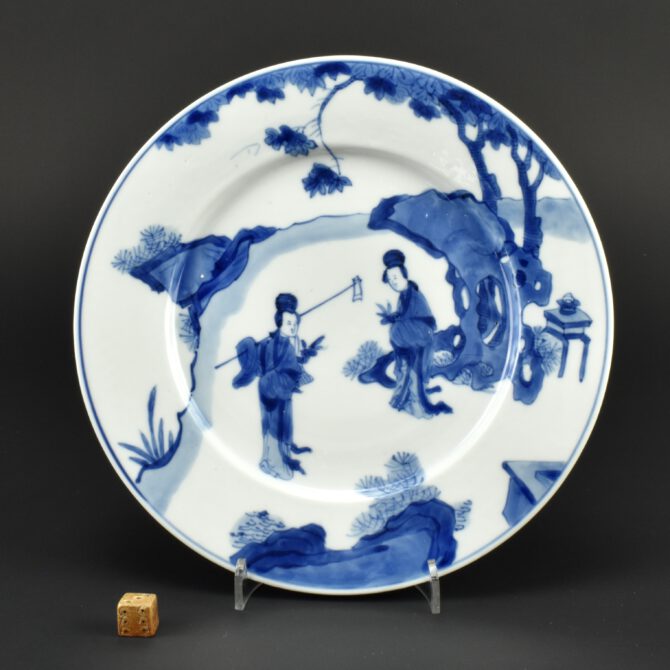
A Kangxi Blue and White Porcelain Plate
A Kangxi Blue and White Porcelain Plate c.1690-1710. The central design is of two Ladies, or ‘Long Eliza` (Lange Lyzen in Dutch), in a garden landscape, the scene is set in a garden. An elegant lady stands holding a small, branched twig, perhaps acacia, the two other ladies stand nearby with a light (?) over her shoulder. This plate is unusual in that the design fills the plate, stopping just short of the rim, it is far more common to have a complex border, rather than with this plate, a simple single line, just before the rim. This very shallow plate is based on European metal and ceramic shapes. Many Dutch late 17th century and early 18th century delftware plates and dishes are of this shape or versions of it. Some of the delftware dishes have the design across the surface of the plate, like the present example. These designs moved to and from East to West and back again, this makes sorting out which design elements came first, rather difficult.
Kangxi blue and white porcelain figure decorated plates of this type were very popular in Holland, where the elegant Chinese ladies were referred to as Lange Lyzen. The shape, size and tones of blue employed, as well as the white pearly glaze, are very similar to the well-known `Rotterdam Riot` plates which can be dated to c.1692-1695. Unlike the political subject of the Rotterdam Riot plates, figures as a subject matter was not ephemeral. Therefore, it is likely the figure decorated plates were made over a longer period, this is further confirmed by the large extant number known. It is certain that the production must have overlapped as the two types are very similar in every way except the central design. Kangxi blue and white export porcelain object are sometimes found with the six-character mark of the emperor Kangxi (1662-1722) to the base. These none-imperial reign marks are referred to as minyao in Chinese, denoting them as `popular wares` not destined for court use. However, the majority of the marked pieces bare the mark of earlier Ming dynasty emperors, some are Jiajing (1522-1566), occasionally Wanli (1573-1620) but by far the most encountered marks are those of Chenghua (1465-1487). David Howard in `The Choice of the Private Trader` (David S. Howard, Zwemmer, 1994) notes that “The Chenghua mark …. was not intended as a forgery, but rather as a compliment to the quality of the piece and to replace the mark of Kangxi who had forbidden the use of his name on porcelain made for export after 1682; a ban which nominally remained in force until the late 19th century”. It appears this ban was not enforced, or if it was only partly enforced, as we have had many Kangxi export pieces made after this date (1682) that bare the six-character Kangxi mark. It is worth noting that many 19th century copies of Kangxi blue and white porcelain bare a four-character Kangxi mark, something you do not on the original, all Kangxi marks on porcelain of the period were of six-character form.
See below for more photographs and references.
- Condition
- In very good condition, minor rim frit to the edge at the back.
- Size
- 21.3cm (8.4 inches).
- Provenance
- N/A
- Stock number
- 27416-1
- £ GBP
- € EUR
- $ USD
Information
Kangxi Figure Decorated Porcelain :
Kangxi blue and white porcelain figure decorated plates of this type were very popular in Holland where the elegant Chinese ladies were referred to as Lange Lyzen. The shape, size and tones of blue employed, as well as the white pearly glaze, are very similar to the well known `Rotterdam Riot` plates which can be dated to c.1692-1695. Unlike the political subject of the Rotterdam Riot plates, the figure as a subject matter was not ephemeral. Therefore it is likely the figure decorated plates were made over a longer period, this is further confirmed by the large extant number known. It is certain that the production must have overlapped as the two types are very similar in every way except the central design.
Fish, Yu :
The Chinese word for fish, Yu is pronounced in the same way as the word for abundance. So fish have come to represent prosperity and the carp is often represented as sign of success because of its perseverance, swimming up river. Fish, "鱼" yu, sounds like the word for surplus or abundance, "余" yu, so fish are associated with wealth and prosperity. Pairs of fish swimming together, representing marital bliss, were common from the Southern Song (1128-1279) but it was in the Yuan Dynasty (1279-1368) that fish swimming with aquatic plants became a common subject, the patterns were based on popular designs found in Southern China. Some of the earliest Chinese blue and white porcelain (c.1320-1350) depicts fish swimming with plants, frequently lotus as this represented purity. These Yuan designs were shown in the center of bowls and dishes surrounded by concentric geometric borders.It was not until the 16th century that freer, more open designs of fish swimming among seaweed and crabs were popular.
